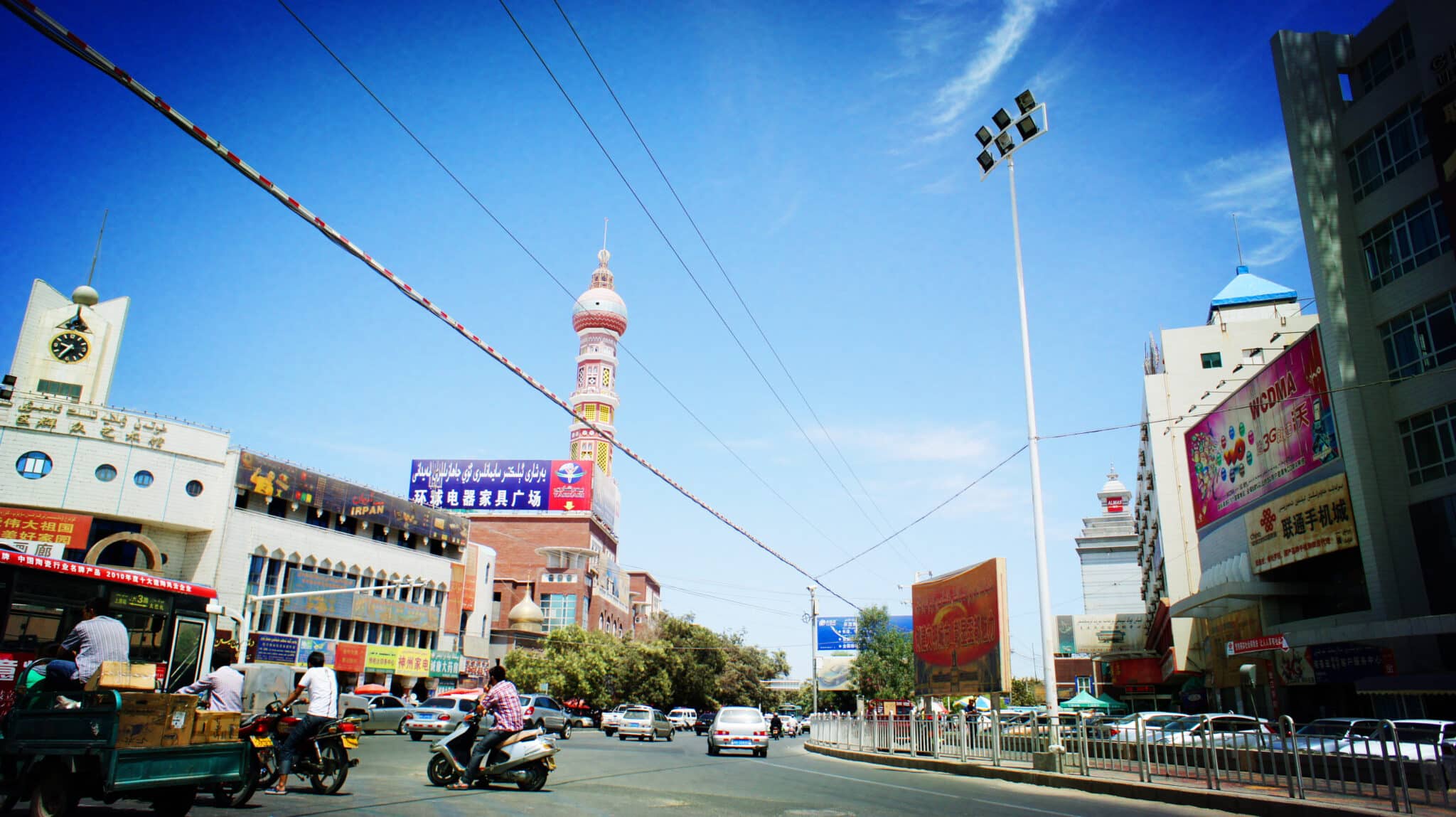Xinjiang, officially known as the Xinjiang Uyghur Autonomous Region, is located in the northwestern part of China. The region is known for its beautiful natural scenery, abundant oil and natural gas reserves, the prevalence of Islam, and diversity in its ethnic population.
I am a Han Chinese with no blood ties to the Uyghur people, but I became interested in this region because of its delightful dance style and music. For as long as I remember, Uyghur dancing has been one of my favorite pastimes. So it only makes sense that I should go to Xinjiang, to see how the locals dance, instead of just seeing it on dance lessons on DVDs from Shanghainese corner stores.
In the summer of 2010, I finally had the chance to visit the land of my dreams for the very first time. I started my journey from Beijing, traveling the “Silk Road route” to Xi’an, Jiayuguan, Lanzhou, and Dunhuang. From there, I flew to Urumqi and traveled south in a circular path around the Taklimakan Desert. Along my city-hopping trip, I visited more than 15 locations, including cities such as Turpan, Qiemo, Ruoqiang, Yutian, and Khotan, but also others not even marked on the map. Along the way, I danced with the Uyghurs, attended their huge banquets, and ate a lot of “كاۋاپ” (kebab). There were difficulties too, for example the omnipresence of mosquitoes, a lack of clean anything, and the scorching desert sun. Nevertheless, I fell in love deeply with the land and its adorable people for their enthusiasm toward music and feasting, relaxing lifestyle, and most importantly, for their kindness and acceptance. I was an outsider, by look and everything else, but I blended well into their circle.
I went to Xinjiang for the second time in the summer of 2011, this time, equipped with one year of Uyghur classes at my college. Coincidentally, my trip took place around the time of the infamous “7/18 incident”, the name Chinese media gave to the riot that occurred in Khotan, where at least 18 people lost their lives. Along my trip, the event that both intrigued and saddened me constantly slipped into my thoughts.
Many Han Chinese have spoken to me about the dangers of Xinjiang, the Uyghurs’ “higher tendency to commit crimes”, their animosity toward the Han, and even their “laziness”. As I understand it from my experience, however, the conflicts between the two groups do not stem from their mutual hatred, but rather, from their mutual misunderstandings. If there are enough peaceful communication and exchanges between the two groups, I believe that a bright future for both peoples is within reach. If there is only one thing that I gained through my long travel days in Xinjiang, it is the strong conviction that, no matter how much a group is villainized and discriminated against, when you walk closer to the people and see their faces, you will see that they are just like you and me, and they are no longer a mystery.


